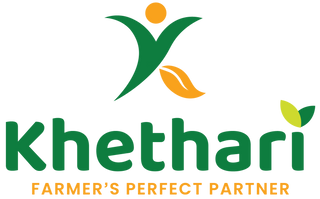
Types of Shade Nets and Their Uses in Agriculture and Horticulture
In today’s climate-sensitive agriculture, farmers and nursery growers face challenges such as excessive heat, uneven rainfall, and strong winds. To overcome these challenges, shade nets have become an indispensable part of modern farming. Shade nets help regulate sunlight, temperature, and moisture, ensuring that crops and plants grow under optimal conditions.
But did you know that shade nets are available in different types, each serving a unique purpose? Let’s dive deep into the various types of shade nets and their applications.
1. Shade Nets Based on Shade Percentage
Shade percentage indicates how much sunlight is blocked by the net. Choosing the right percentage is crucial for plant health.
25% Shade Net
- Allows maximum sunlight with little protection.
- Suitable for sun-loving crops like cotton, maize, groundnut, and certain pulses.
35% Shade Net
- Provides moderate shade.
- Best for vegetables like cucumbers, gourds, and flowers that need balanced sunlight.
50% Shade Net
- The most popular choice in agriculture.
- Ideal for nurseries, vegetables like tomato, capsicum, and leafy greens.
- Prevents leaf scorching while promoting healthy growth.
75% Shade Net
- Blocks strong sunlight effectively.
- Suitable for delicate plants such as orchids, ferns, and ornamental flowers.
90% Shade Net
- Offers maximum protection from heat and sunlight.
- Commonly used in livestock sheds, parking spaces, storage yards, and for protecting non-crop materials.
2. Shade Nets Based on Material
The durability and strength of a shade net depend on the material used.
HDPE Shade Nets (High-Density Polyethylene)
- UV-stabilized, long-lasting, and resistant to harsh weather.
- Widely used by farmers and nurseries.
Polypropylene Shade Nets
- Lightweight and economical.
- Suitable for small-scale or temporary use.
Knitted Shade Nets
- Flexible, tear-resistant, and perform well in windy conditions.
- Easy to install and remove.
Woven Shade Nets
- Strong and durable but heavier.
- Provide uniform shade, commonly used in permanent setups.
3. Shade Nets Based on Color
Colors are not just for looks they affect plant growth too. Different colors alter the spectrum of light reaching the plants.
Green Shade Nets
- Most widely used in agriculture.
- Balance between light penetration and cooling effect.
Black Shade Nets
- Provide maximum shade and heat absorption.
- Best for livestock shelters, parking spaces, and materials protection.
White Shade Nets
- Reflect more light, reducing heat.
- Suitable for nurseries, young saplings, and heat-sensitive crops.
Red and Blue Shade Nets
- Used in advanced horticulture and floriculture.
- These colors enhance specific plant growth responses, such as faster flowering or stronger stems.
4. Shade Nets Based on Usage
Shade nets are designed not only for agriculture but also for multipurpose use.
Agriculture Shade Nets
Used for crops, nurseries, orchards, and greenhouses.
Horticulture Shade Nets
Suitable for floriculture, medicinal plants, and ornamental gardens.
Commercial Shade Nets
Used in construction sites, car parking areas, and industrial sheds.
Household Shade Nets
Ideal for home gardens, balconies, terraces, and small nurseries.
Benefits of Using Shade Nets
- Protects plants from excessive sunlight and UV radiation.
- Maintains soil moisture by reducing evaporation.
- Shields crops from heavy rains and strong winds.
- Reduces pest infestation by acting as a physical barrier.
- Improves overall yield and crop quality.
